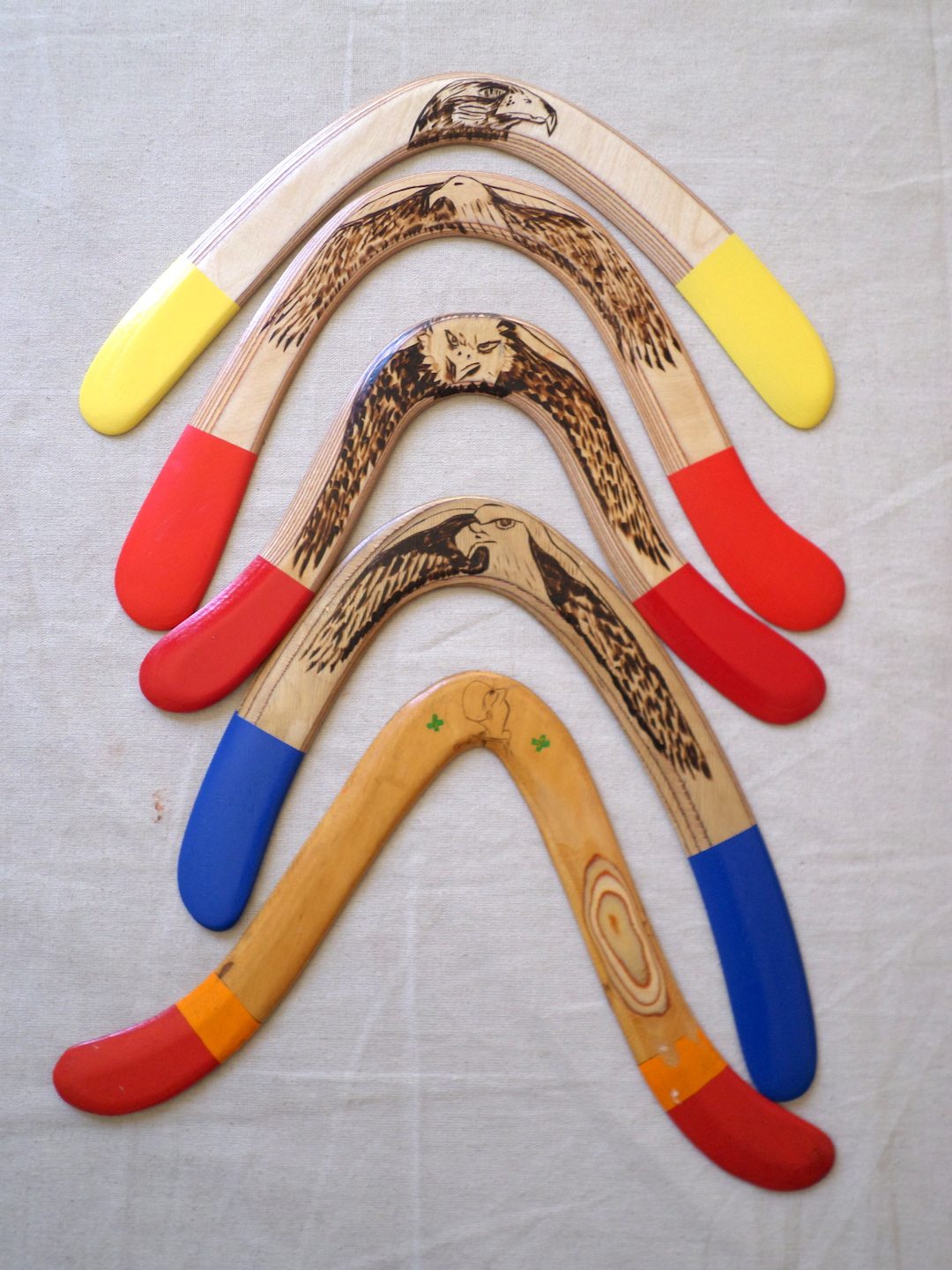
Tom is the founder of Greyford Boomerangs. He was known for his Eagle Art Wood Burning.
Over the years, Gothic Arch was one of his boomerangs that I featured. Tom is also an excellent artist in oils and other media.

Tom is the founder of Greyford Boomerangs. He was known for his Eagle Art Wood Burning.
Over the years, Gothic Arch was one of his boomerangs that I featured. Tom is also an excellent artist in oils and other media.
Rich,
I was working at Radio Shack,saw their car phone antenna.
“That’s an interesting shape,” I thought. I traced the antenna, rounded the wingtips(which were were too pointy) making them round and baulous.
Rich,you thought it looked like a Church Nave and suggested calling it Gothic Arch, a name I liked.
Ted Bailey liked it too. He said it looked like a Gothic Arch bridge–where two sides come up and meet at a tip in the middle.
The Gothic Arch flew with a slow spin because of all the material at the elbow.
Its slow spin made it the perfect boomerang to practice catching.
You no longer sell the Gothic Arch. I do see the EAGLE ART 70V on your site.
Some shapes just move me more than others. I see a shape and think, “that would make an interesting boomerang”. Sometimes the shape turns out to be a dud and doesn’t fly well.
John Mauro(you list his book on your site) developed his boomerang based on the Sine Wave, a shape you see on statistical charts. His boomerang appears in the 2nd edition of Loran Hawes book. John made very few of these, but I got an original (very rare).
Steve Conaway(sold his work under the name Aboriginal Steve) used that shape in his production models but didn’t give Mauro any credit for the shape.
How my boomerangs come about are many and vary. I usually take one shape from one boomerang and another shape from another and put them together to make one boomerang–something that Gel does also.
But none of this seems to matter to the general public, but it sure does to those of us who have boomerang fever.
Tom R